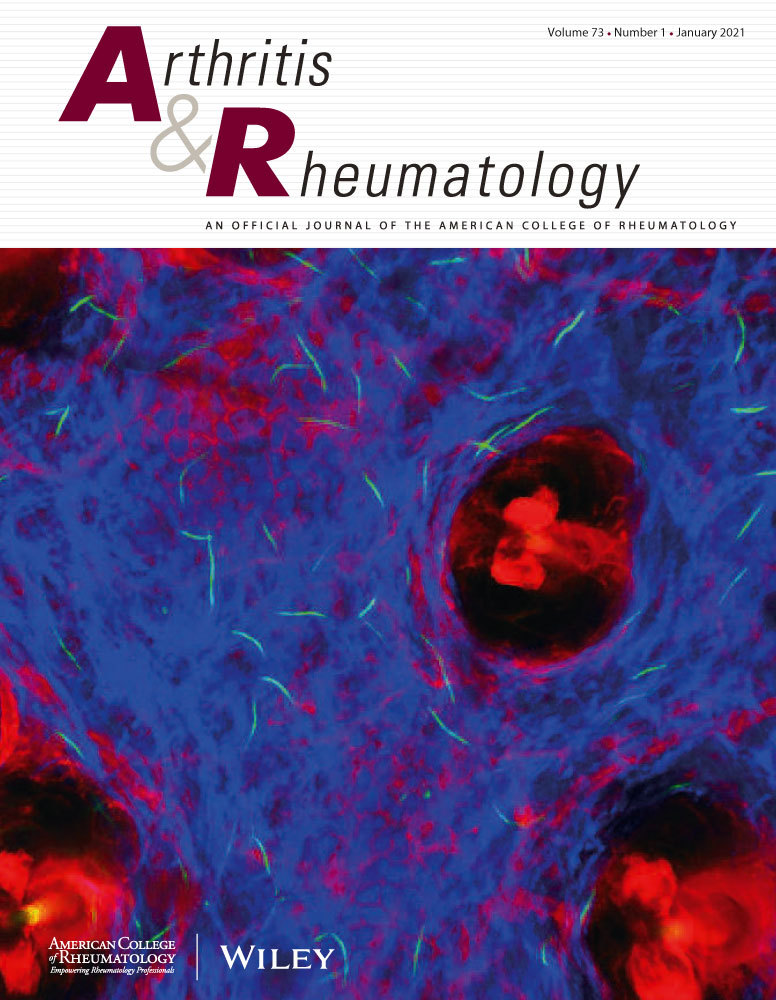ROS‐induced modifications of fibrin clots connect immune responses to atherothrombosis in systemic lupus erythematosus
IF 10.9
1区 医学
Q1 RHEUMATOLOGY
引用次数: 0
Abstract
ObjectiveCardiovascular events are major determinants of morbidity and mortality in systemic lupus erythematosus (SLE), particularly in patients with renal involvement. While oxidative stress has been implicated in driving vascular and renal damage in SLE, the specific mechanisms remain unclear. This study investigated the potential role of oxidative stress‐induced alterations in fibrinogen structure and function in the pathogenesis of atherothrombosis in SLE.MethodsIn this cross‐sectional study, we enrolled 144 adult patients with SLE and 90 matched controls. We measured blood leukocyte reactive oxygen species (ROS) production, systemic redox status, and the structural and functional features of purified fibrinogen. Correlations between these parameters and disease activity were also investigated.ROS诱导的纤维蛋白凝块修饰将系统性红斑狼疮患者的免疫反应与动脉粥样硬化血栓形成联系起来
目的心血管事件是系统性红斑狼疮(SLE)发病率和死亡率的主要决定因素,特别是在肾脏受累的患者中。虽然氧化应激与SLE的血管和肾脏损伤有关,但其具体机制尚不清楚。本研究探讨了氧化应激诱导的纤维蛋白原结构和功能改变在SLE动脉粥样硬化血栓形成发病机制中的潜在作用。方法在这项横断面研究中,我们招募了144名SLE成年患者和90名匹配的对照组。我们测量了血液白细胞活性氧(ROS)的产生、系统氧化还原状态以及纯化纤维蛋白原的结构和功能特征。这些参数与疾病活动之间的相关性也进行了调查。体外实验阐明了ROS水平、蛋白质氧化和纤维蛋白异常之间的因果关系,为观察到的变化提供了机制上的见解。结果ssle患者白细胞ROS生成增加,主要是中性粒细胞NADPH氧化酶激活所致。有趣的是,活动性增殖性狼疮肾炎患者的肾脏活检显示NADPH氧化酶复合物p22phox过表达。这伴随着血浆氧化应激,如血浆脂质过氧化升高和抗氧化防御降低所示。纤维蛋白原氧化与结构和功能变化有关,导致形成更密集的纤维蛋白网络,降低凝块孔隙度,降低对纤溶蛋白介导的纤维蛋白溶解的敏感性。有趣的是,这些纤维蛋白原修饰与氧化还原状态和疾病活性的改变相关。结论氧化应激可能驱动SLE患者纤维蛋白原的结构和功能改变,可能是SLE患者动脉粥样硬化形成的一种新的发病机制。
本文章由计算机程序翻译,如有差异,请以英文原文为准。
求助全文
约1分钟内获得全文
求助全文
来源期刊

Arthritis & Rheumatology
RHEUMATOLOGY-
CiteScore
20.90
自引率
3.00%
发文量
371
期刊介绍:
Arthritis & Rheumatology is the official journal of the American College of Rheumatology and focuses on the natural history, pathophysiology, treatment, and outcome of rheumatic diseases. It is a peer-reviewed publication that aims to provide the highest quality basic and clinical research in this field. The journal covers a wide range of investigative areas and also includes review articles, editorials, and educational material for researchers and clinicians. Being recognized as a leading research journal in rheumatology, Arthritis & Rheumatology serves the global community of rheumatology investigators and clinicians.
 求助内容:
求助内容: 应助结果提醒方式:
应助结果提醒方式:


